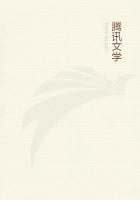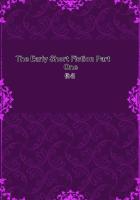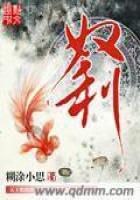Early in 1542 the MS. was ready; the drawings had been made with infinite care, the blocks for the figures had been cut, and in September, he wrote to Oporinus urging that the greatest pains should be taken with the book, that the paper should be strong and of equal thickness, the workmen chosen for their skill, and that every detail of the pictures must be distinctly visible. He writes with the confidence of a man who realized the significance of the work he had done. It is difficult to speak in terms of moderation of the "Fabrica." To appreciate its relative value one must compare it with the other anatomical works of the period, and for this purpose I put before you two figures from a text-book on the subject that was available for students during the first half of the sixteenth century. In the figures and text of the "Fabrica" we have anatomy as we know it; and let us be honest and say, too, largely as Galen knew it. Time will not allow me to go into the question of the relations of these two great anatomists, but we must remember that at this period Galen ruled supreme, and was regarded in the schools as infallible.
And now, after five years of incessant labor, Vesalius was prepared to leave his much loved Padua and his devoted students.
He had accomplished an extraordinary work. He knew, I feel sure, what he had done. He knew that the MSS. contained something that the world had not seen since the great Pergamenian sent the rolls of his "Manual of Anatomy" among his friends. Too precious to entrust to any printer but the best--and the best in the middle of the sixteenth century was Transalpine--he was preparing to go north with the precious burden. We can picture the youthful teacher--he was but twenty-eight--among students in a university which they themselves controlled--some of them perhaps the very men who five years before had elected him--at the last meeting with his class, perhaps giving a final demonstration of the woodcuts, which were of an accuracy and beauty never seen before by students' eyes, and reading his introduction. There would be sad hearts at the parting, for never had anyone taught anatomy as he had taught it--no one had ever known anatomy as he knew it.
But the strong, confident look was on his face and with the courage of youth and sure of the future, he would picture a happy return to attack new and untried problems. Little did he dream that his happy days as student and teacher were finished, that his work as an anatomist was over, that the most brilliant and epoch-making part of his career as a professor was a thing of the past. A year or more was spent at Basel with his friend Oporinus supervising the printing of the great work, which appeared in 1543 with the title "De Humani Corporis Fabrica." The worth of a book, as of a man, must be judged by results, and, so judged, the "Fabrica" is one of the great books of the world, and would come in any century of volumes which embraced the richest harvest of the human mind. In medicine, it represents the full flower of the Renaissance. As a book it is a sumptuous tome a worthy setting of his jewel--paper, type and illustration to match, as you may see for yourselves in this folio--the chef d'oeuvre of any medical library.
In every section, Vesalius enlarged and corrected the work of Galen. Into the details we need not enter: they are all given in Roth's monograph, and it is a chapter of ancient history not specially illuminating.
Never did a great piece of literary work have a better setting.
Vesalius must have had a keen appreciation of the artistic side of the art of printing, and he must also have realized the fact that the masters of the art had by this time moved north of the Alps.
While superintending the printing of the precious work in the winter of 1542-1543 in Basel, Vesalius prepared for the medical school a skeleton from the body of an executed man, which is probably the earliest preparation of the kind in Europe. How little anatomy had been studied at the period may be judged from that fact that there had been no dissection at Basel since 1531.[22] The specimen is now in the Vesalianum, Basel, of which I show you a picture taken by Dr. Harvey Cushing. From the typographical standpoint no more superb volume on anatomy has been issued from any press, except indeed the second edition, issued in 1555. The paper is, as Vesalius directed, strong and good, but it is not, as he asked, always of equal thickness; as a rule it is thick and heavy, but there are copies on a good paper of a much lighter quality. The illustrations drawn by his friend and fellow countryman, van Calcar, are very much in advance of anything previously seen, except those of Leonardo. The title-page, one of the most celebrated pictures in the history of medicine, shows Vesalius in a large amphitheatre (an imaginary one of the artist, I am afraid) dissecting a female subject. He is demonstrating the abdomen to a group of students about the table, but standing in the auditorium are elderly citizens and even women. One student is reading from an open book. There is a monkey on one side of the picture and a dog on the other. Above the picture on a shield are the three weasels, the arms of Vesal.
The reproduction which I show you here is from the "Epitome"--a smaller work issued before [?] the "Fabrica," with rather larger plates, two of which represent nude human bodies and are not reproduced in the great work. The freshest and most beautiful copy is the one on vellum which formerly belonged to Dr. Mead, now in the British Museum, and from it this picture was taken.

